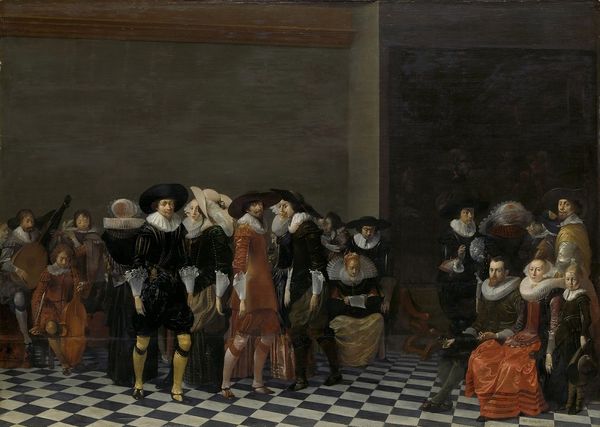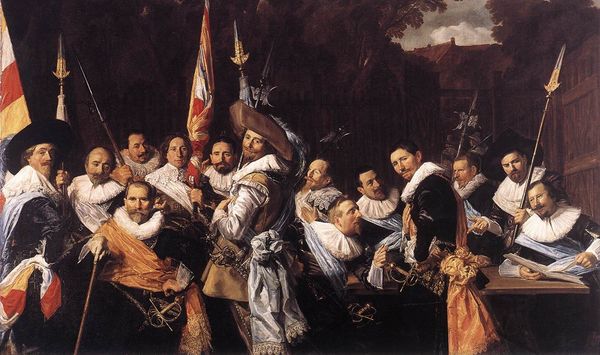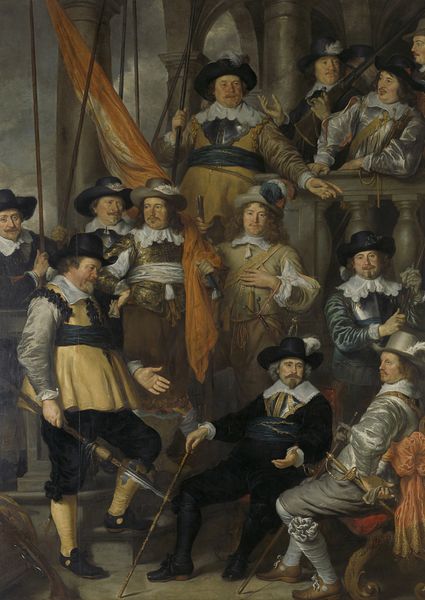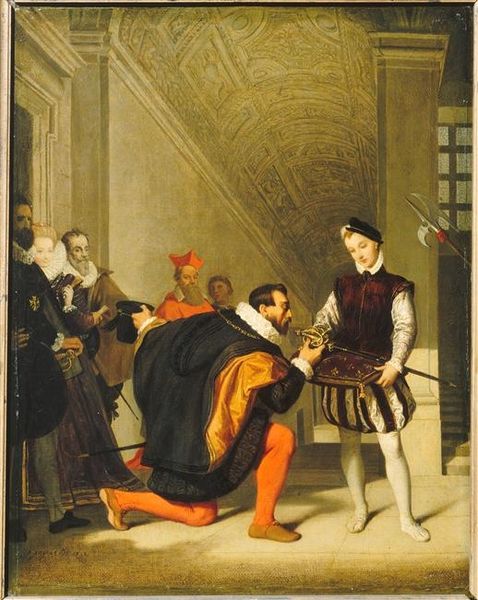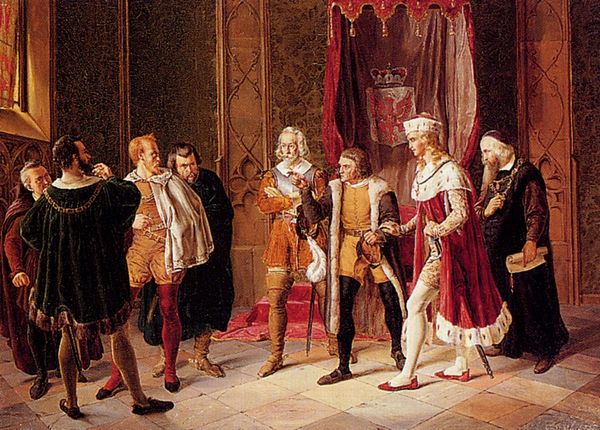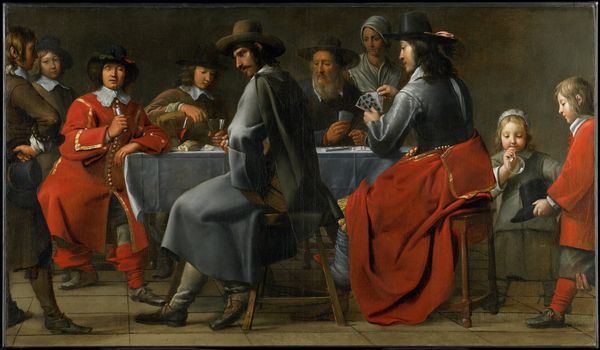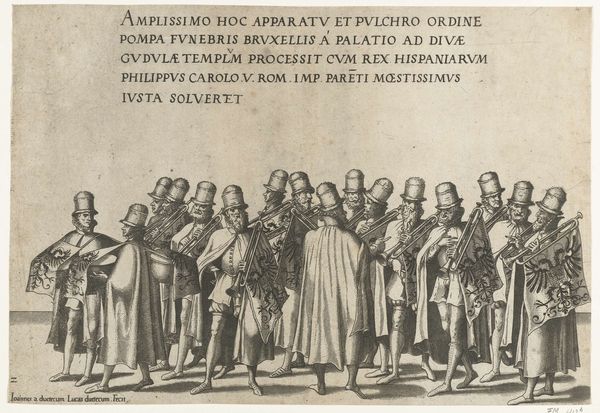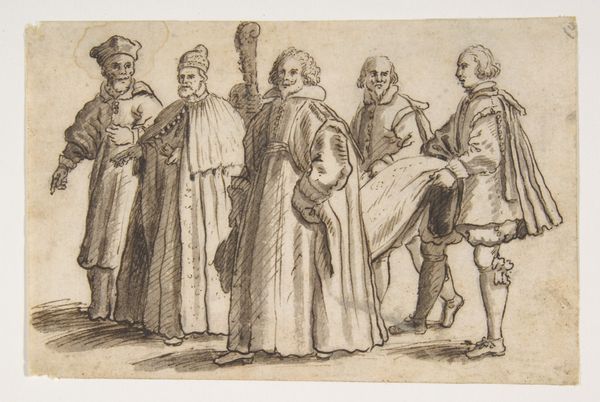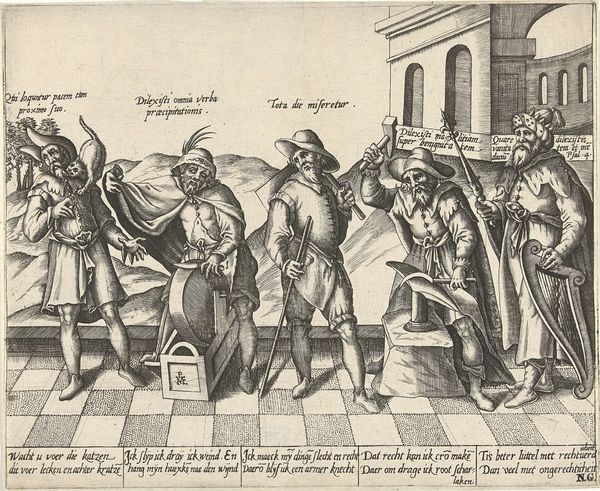
The company of Captain Reinier Reael and Lieutenant Cornelis Michielsz. Blaeuw, known as the ‘Meagre Company’ (detail) 1637
0:00
0:00
painting, oil-paint
#
portrait
#
baroque
#
dutch-golden-age
#
painting
#
oil-paint
#
figuration
#
group-portraits
#
genre-painting
Copyright: Public domain
Curator: Today we're looking at a detail from Frans Hals's 1637 group portrait, "The company of Captain Reinier Reael and Lieutenant Cornelis Michielsz. Blaeuw," also playfully known as the ‘Meagre Company.’ It's an oil painting of a civic guard. Editor: Meagre indeed. There’s a prevailing mood of seriousness, almost grimness. The muted palette emphasizes blacks and grays punctuated only by the stark whites of their ruffs and collars. What an impactful use of chiaroscuro. Curator: I am fascinated by what "Meagre" suggests about the social dynamics at play. Hals had previously been lauded for group portraits such as his rendition of the Banquet of the Officers of the St. George Militia Company. This commission came much later and it's been posited that a rift had emerged between Hals and some sitters on the Reael commission. Do you get a sense of disaffection, judging by the composition itself? Editor: Possibly. Consider the spears held aloft. They slice through the composition, disrupting any sense of harmonious gathering, and there is no classical unifying compositional feature, but what to make of that light blue sash on the figure second from the right? It nearly escapes from the subdued tones. Curator: Let’s think about materials: Hals was at the peak of his artistic powers, quickly laying down strokes with incredible efficiency, even bravado. Consider too, the socio-economics of Dutch painting at this time; there was an open market for pictures, with artists often mass-producing for burghers with disposable income, and group portraits such as this reflect and reinforced social cohesion among Dutch elites. Editor: Indeed. Hals certainly understood how to capture textures—the sheen of polished armor, the intricate lace. You can almost feel the weight of their clothing. These details create a convincing illusion of depth and realism. Beyond the bravado and swagger, Hals has produced remarkable gradations of black. Curator: Knowing this work's process offers a view onto class structures that would be good for audiences to bear in mind, and in particular, Hals's working methods at this time; some consider that the "looseness" or "painterliness" so praised, may well be reflective of him having to create such vast canvasses more efficiently, even by farming out some of the work to assistants. It adds complexity to his position in Dutch art history. Editor: True. For me, I’m continually drawn to the play of light on each face, lending character, bringing those stern figures from centuries past so vividly to life. It remains compelling. Curator: Well, seeing those nuances enlivens my sense of their historical world—thank you for your observations. Editor: And thank you for directing my focus beyond the canvas itself.
Comments
No comments
Be the first to comment and join the conversation on the ultimate creative platform.
